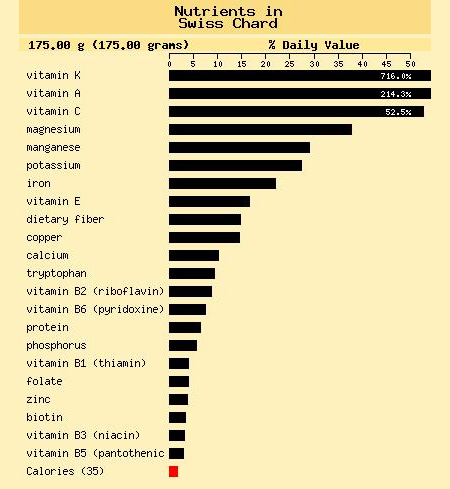Add colour to garden beds with Swiss Chard
Swiss Chard Beta vulgaris ‘Bright Lights’ has to be one of the easiest and most colourful vegetables that you can add to a garden.
While generally a cool-season plant, it can also endure the extreme heat of summer. In my garden, swiss chard has weathered the intense summer heat with little maintenance, providing a regular supply of this healthy vegetable, which is not only high in Vitamin A and C, iron and calcium, but research also shows that it plays a role in blood-sugar regulation and is beneficial to those with diabetes.
Swiss Chard and blood sugar levels
Multiple studies on animals have shown that swiss chard has unique benefits for blood sugar regulation. In addition, it may provide special benefits in the diets of individuals diagnosed with diabetes. Although large-scale human studies have yet to be conducted in this area, lab studies and animal studies show that syringic acid - one of chard's premiere flavonoids - has the ability to inhibit activity of an enzyme called alpha-glucosidase.
Alpha-glucosidase is an enzyme used to break down carbohydrates into simple sugars. When this enzyme gets inhibited, fewer carbs get broken down and blood sugar is able to stay more steady. This blood sugar-steadying process seems to be particularly true following a meal. In addition to its syringic acid, chard contains a very good amount of fibre (over 3.5 grams per cooked cup) and a very good amount of protein (once again, nearly 3.5 grams per cooked cup).
Fibre and protein-rich foods are an excellent way to help stabilize blood sugar levels, since they help regulate the speed of digestion and keep food moving at the right pace through our digestive tract.
Nutrition
The dark green crumpled leaves provide a stark contrast to the beautiful colours of the stem, but it's the leaves that are nutritious, in fact, Swiss Chard is considered to be one of the healthiest vegetables available and a valuable addition to a healthy diet. Harvesting is done by simply removing as many leaves as you need while they are still young and tender.
When freshly picked, chard can be used in salads or lightly blanched and served hot, it is even possible to lightly sauté and add to stir fry.
whfoods.org
Swiss chard, like spinach, is the store-house of many phytonutrients that have health promotional and disease prevention properties. It's also very low in calories and fats, and therefore recommended in cholesterol controlling and weight reduction programs.
Swiss chard leaves are an excellent source of vitamin-C - fresh leaves provide about 33% of recommended levels per 100 g. As an anti-oxidant, vitamin C helps to quench free radicals and reactive oxygen species (ROS) through its reduction potential properties. Research studies suggests that regular consumption of foods rich in vitamin C helps maintain normal connective tissue, prevent iron deficiency, and also helps body develop resistance against infectious agents by boosting immunity.
Swiss chard is an excellent source of vitamin-K; 100 g provides about 700% of recommended intake. Vitamin K has potential role bone health by promoting osteotrophic (bone formation and strengthening) activity. Adequate vitamin-K levels in the diet helps limiting neuronal damage in the brain; thus, has established role in the treatment of patients suffering from Alzheimer's disease.
bbbseed2.businesscatalyst.com
Safety first
Because of its high vitamin K content, patients taking anti-coagulants such as warfarin are encouraged to avoid this food since it increases the vitamin K concentration in the blood, which is what the drugs are often attempting to lower. This effectively raises the effective dose of the drug and causes toxicity.
Chard contains oxalic acid, a naturally occurring substance found in some vegetables which may crystallise as oxalate stones in the urinary tract in some people. It is, therefore, advisable to avoid eating chard in people with known oxalate urinary tract stones. Adequate intake of water is therefore advised to maintain normal urine output.




